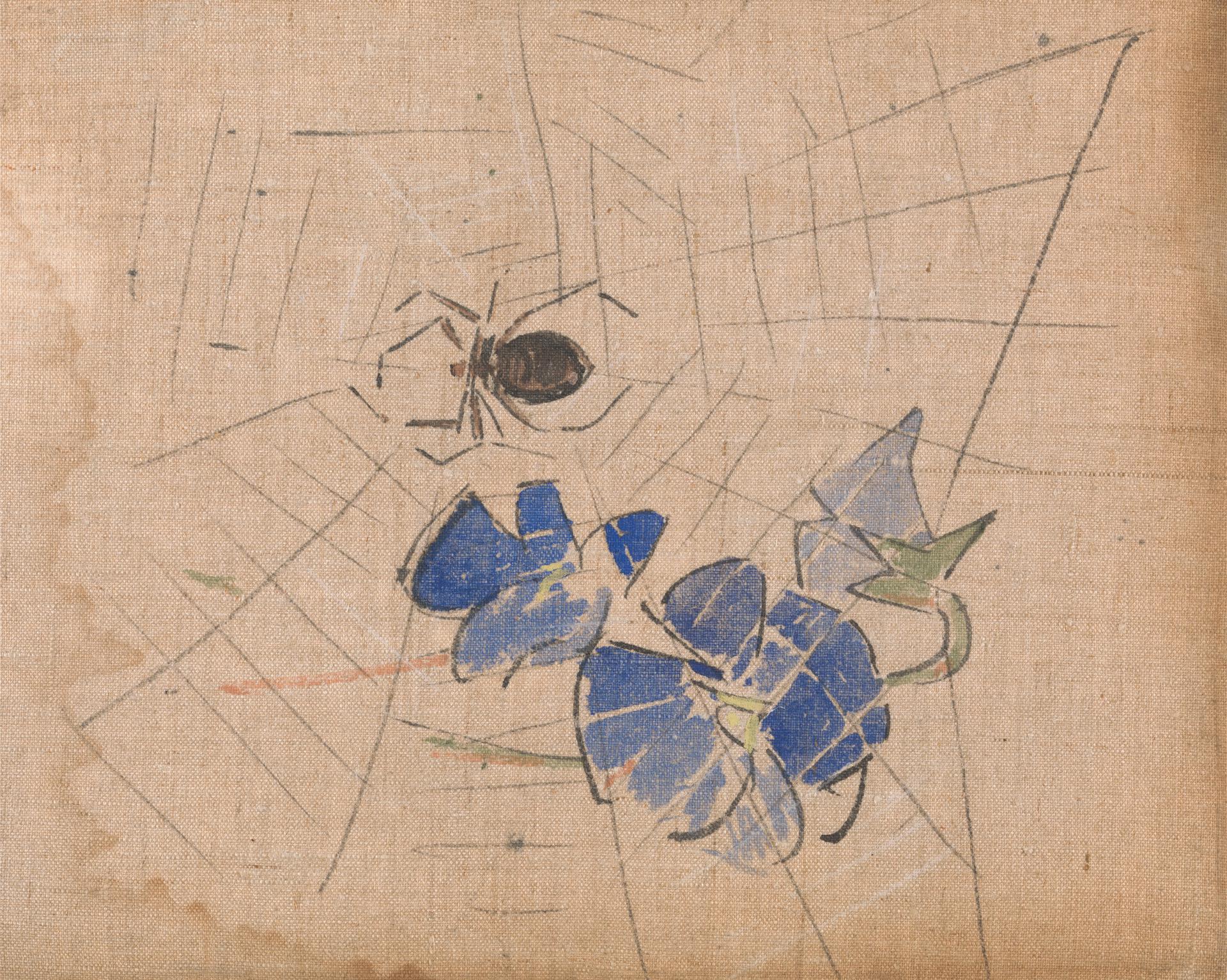On its most visceral level, Leila Slimani’s The Perfect Nanny is about infanticide: “The baby is dead,” we read on its very first line. What could possibly jar after that?
But this literary blockbuster (Chanson Douce, or “sweet song,” in its original French) may be just as startling for how the killer instincts of its “perfect” nanny, Louise, are gradually exposed but never condemned. Nor does Slimani blame mother Myriam for her instinct to abandon her children: “this thought that fleetingly crosses her mind, this idea that is not cruel but shameful…We will, all of us, only be happy, she thinks, when we don’t need each other anymore. When we can live a life of our own, a life that belongs to us, that has nothing to do with anyone else.”
The mother’s thirst for freedom rivals the nanny’s hunger for feeling needed by the family she serves—a craving that, untended, manifests in murder. “She has no patience now for their tears, their tantrums, their hysterical excitement,” we are told of Louise toward the book’s conclusion. “She shakes her head to get rid of these thoughts…but a dark and slimy tide has completely submerged her. Someone has to die. Someone has to die so that we can be happy.”
While both Myriam and Louise reflexively police their darker urges, the effort to do so seems all but futile—Slimani more invested in plumbing the extremes than warning how to avoid them. “That animal part of us, it’s the most interesting part,” the author told The New Yorker in a recent interview. “It’s everything that has to do with drives, with things we can’t stop ourselves from doing, with all the spaces where we’re unable to reason with ourselves. It has its dark side, but there’s a luminous side, too….”
A glow to the blackest urge? Radiance from ruin? This exploratory approach to a woman’s impulse to destroy—others or herself—lies at stake in a spate of literature across genres over the past few years, shunning moral correctives for a more liberating take on the female death drive. While historically masculinized as an adrenaline-fueled instinct coming from a reckless male protagonist, this new archetype proves at once full-throttle and unabashedly female—thwarting essentialist belief in woman as harmless virtue-vendor for something brazenly more complicated.
 In Daphne Merkin’s 2017 memoir This Close to Happy: A Reckoning with Depression—its cover the refulgent surface of a pool over which a female shadow hovers—despair itself is reconceived as “having a light all its own, a lunar glow, the color of mottled silver.” Extolling depression’s “negative bravura” for its “splashy defiance in the face of what is on offer,” Merkin doesn’t so much directly defend the death drive as acknowledge the allure of its uncompromising standards—a cannonball into the oblivion while everyone else is sunbathing.
In Daphne Merkin’s 2017 memoir This Close to Happy: A Reckoning with Depression—its cover the refulgent surface of a pool over which a female shadow hovers—despair itself is reconceived as “having a light all its own, a lunar glow, the color of mottled silver.” Extolling depression’s “negative bravura” for its “splashy defiance in the face of what is on offer,” Merkin doesn’t so much directly defend the death drive as acknowledge the allure of its uncompromising standards—a cannonball into the oblivion while everyone else is sunbathing.
But her enduring urge to kill herself is matched with an equally strong zest for knowledge; part of her early ruminations are on how differently depression is construed between genders, and why. “Men…have cannily figured out how to sidestep the implication of moral failing that attaches to mental illness,” whereas “female sufferers tend to take ownership…accepting that it springs not only from errant biology but from a yawning inner lack—some elusive craving for wholeness or well-being.”
While deliberating on her feelings of incompletion—their provenance notwithstanding—Merkin rejects the premise that this seeming elision has moral heft. In a candid spirit of contradiction, she can at once fear her “shit smells worse than anyone else’s,” and believe that her darkness grants her greater access to the exigencies of life, with “an underlying conviction that language can transmute personal pain into a shared grief about what living in the world entails.”
 This language of woe, wreckage, and wild desire bursts into a scattershot of syllables in JoAnna Novak’s debut collection of verse, Noirmania. Arranged into nine-line stanzas that, when read aloud, fall like aural pearls across the page, the book-length poem takes the form of a “cortège,” or death march, as imagined by a speaker both ravaged and ravished by the nouns of a life. “I was dead less then,” the book begins; a few phrases later later we learn that the speaker has “lived deep/ famine.” Living deep, in this world, means hovering close to deprivation and the threat of death. Appetite channels adrenaline, a Russian roulette with rush and ruin defiant in its zeal.
This language of woe, wreckage, and wild desire bursts into a scattershot of syllables in JoAnna Novak’s debut collection of verse, Noirmania. Arranged into nine-line stanzas that, when read aloud, fall like aural pearls across the page, the book-length poem takes the form of a “cortège,” or death march, as imagined by a speaker both ravaged and ravished by the nouns of a life. “I was dead less then,” the book begins; a few phrases later later we learn that the speaker has “lived deep/ famine.” Living deep, in this world, means hovering close to deprivation and the threat of death. Appetite channels adrenaline, a Russian roulette with rush and ruin defiant in its zeal.
“I have it on top, sweet candy,” we read, “and a finger wet/ with blood. A crop of arms and a galleria/of hopes: a leash, a silo, a stable.” Sensory indulgence begets the sheen of asceticism—hope just subjugation in coarse agrarian clothes. Chocolate meets “ribbon curled with scissors” while rose lozenges are slowly sucked by a speaker “hurting for dust.” “Noirmania” as a term comes from a 2016 Chanel catalogue, and the epigraph to the collection (“Guilt is perhaps the most painful companion of death”) from Coco Chanel herself—both homage to the act of investigating and aestheticizing darkness.
Throughout Novak’s dazzle dirge, what may look lyrically messy assumes a bold, ceremonious order—the “incessant glitter” of life on the edge a welcome bedfellow to femmed-out “self-reliance.” “No, it wasn’t work just power,” Novak writes, white space serving as visual punctuation; upon each landscape-oriented page it as though the void itself were invading syntax, as though line and life alike were formed around the prospect of oblivion.
“I’ll have none of you,” Merkin writes in This Close to Happy, “not the wind or the stars or human attachment or the slightly vacant quality of a late Tuesday afternoon, when the streets are not yet full and somewhere a siren is wailing.” But like Novak, her alertness to—and appetite for—the slightest sensory detail become a reason, perhaps the reason, to keep on going, no matter the temptation to call it quits.
 For Sarah Gerard’s 2015 debut, Binary Star, this dance with death takes on galactic proportions, an eating disorder the rocket hurling toward a glowing sky. Stirred by the irony that stars are most visible—and luminous—when dying, Gerard’s protagonist grants her own withering body incredible power and complexity: “I am a white dwarf,” she declares at the novel’s start. “I spend all my energy, compress my core. I ionize electrons…Everything has a shimmer, including me, and I am empty.” Rather than solicit pity for this unnamed narrator, Gerard asks us to do something far more daring: join her on her journey to self-incineration, and marvel at the spectacle. “Nobody ever talks about the giant black hole at the center of our galaxy,” she muses, “or the fact that most, if not all, galaxies orbit supermassive black holes. It is not good for casual conversation to talk about circling oblivion…Deep death, if you consider that death is a matter of time.”
For Sarah Gerard’s 2015 debut, Binary Star, this dance with death takes on galactic proportions, an eating disorder the rocket hurling toward a glowing sky. Stirred by the irony that stars are most visible—and luminous—when dying, Gerard’s protagonist grants her own withering body incredible power and complexity: “I am a white dwarf,” she declares at the novel’s start. “I spend all my energy, compress my core. I ionize electrons…Everything has a shimmer, including me, and I am empty.” Rather than solicit pity for this unnamed narrator, Gerard asks us to do something far more daring: join her on her journey to self-incineration, and marvel at the spectacle. “Nobody ever talks about the giant black hole at the center of our galaxy,” she muses, “or the fact that most, if not all, galaxies orbit supermassive black holes. It is not good for casual conversation to talk about circling oblivion…Deep death, if you consider that death is a matter of time.”
Crucial to the book’s power is Gerard’s ability to abstract anorexia into celestial, if duly terrible, terms. “I’ve had nothing to eat for three days,” the narrator tells us toward the end. “I shake. I drink coffee. I feel that my body is crystallizing. I feel it beginning at the center. A stellar wind flows from my atmosphere, shedding matter in ionized gas. I’m charged. I leave trails of myself behind me.” In place of the waif of after-school specials we get the Stephen Hawking of starvation—approaching gravity with the acumen of a master quantum physicist, but in this case it is the gravity of female need.
If there is a weakness to Binary Star, it may be how hastily its final pages shift from deft introspection into an account of public eco-terrorism, though Gerard’s language and imagery exceed stock martyrdom. “I fall to my knees./ I’m faint.” we read. “…I’m throwing up blood./ I’m reeling. I’m reeling./ I’m reeling./ I shine.” This great last grasp for light is all we have left: a transfigured star leaving nothing behind.
Just as Gerard never shames her destructive narrator, Slimani never rebukes Louise, nor does she sentimentalize her poverty—or that of the many other nannies (most of them immigrants) featured in the novel. After killing her two charges, Mila and Adam, the nanny tries—and fails—to kill herself, becoming an “aging…sleeping doll, with thick white bandages on her neck and hands, instead of jewelry” in her white hospital bed. With her “pale eyelids…gray roots at her temples and the weak throb of a vein beating under her earlobe,” Louise’s visage is all the more terrifying for its vulnerability, her body as alarming in its refusal to die as it was in its instinct to kill. Much like the endings in Binary Star, Noirmania, and This Close to Happy, any semblance of “recovery” seems beside the point, a delusion that minimizes the grip of the death drive.
For Slimani, Merkin, Gerard, and Novak, this rejection of moralizing and embrace of the extreme, of I’ll have none of you, exhilarates as it disquiets. Rather than demonize or pathologize, these authors reckon with the death drive straight on, a welcome riposte in a world where women are ever yet expected to be cheerful paragons of nurturing behavior.










